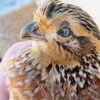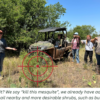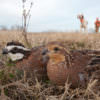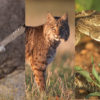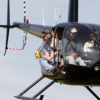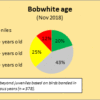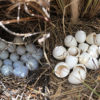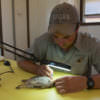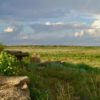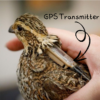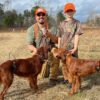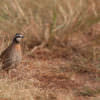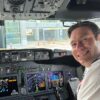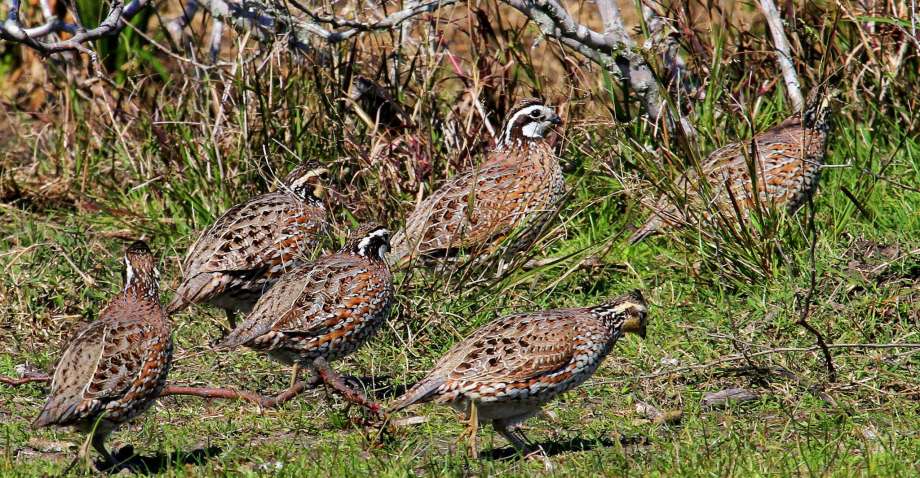
September brought beneficial rainfall to much of the Rolling Plains. The resulting flush of late summer “green up” hopefully will give this season’s broods a leg up as they enter the more stressful Fall and Winter months.
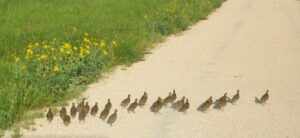
As the calendar shifts to Fall and the days become noticeably shorter, bobwhite broods often begin to encounter one another. These family groups begin forming mixed coveys of multiple parentage. In short order, these merged coveys break up and start forming new coveys that can include birds from different family groups, often in new locations. This shuffling phenomenon typically occurs from late September through November, depending on the region and weather conditions.
Remixing plays a crucial role in quail survival and population dynamics. This period of reorganization and movement within quail populations helps them prepare for the challenging winter months, ensuring they have the best possible chance of surviving until spring and a chance for reproduction.
Several critical outcomes for bobwhites result from this redistribution. Firstly, it allows for genetic mixing, which is essential for maintaining a healthy population. As birds leave their original family groups and integrate with others, they enhance genetic diversity, reducing the risk of inbreeding and increasing the overall resilience of the population. This genetic diversity is especially important for species like bobwhites, which have faced significant population declines in recent decades due to habitat loss, predation, and disease.
Secondly, the formation of large, more diverse coveys increases survival rates. A covey is typically made up of 10 to 15 birds, and their primary advantage lies in their ability to stay warm and avoid predators. By forming larger groups, quail can better conserve body heat during cold winter nights, reducing the energy expenditure needed to maintain their body temperature. Additionally, more eyes and ears mean better vigilance to avoid predators. This heightened vigilance is crucial for surviving in the wild, where threats from hawks, bobcats, and other predators are constant.
Third, brood mixing also encourages the exploration of new habitats. As young birds disperse and mix with others, they often travel beyond their original home ranges. This movement allows them to discover and exploit new food sources, cover, and shelter, which is essential as the availability of resources fluctuates throughout the year. For example, bobwhites may shift from areas with abundant summer vegetation to locations with dense brush and grass that offer better protection from predators and harsh weather during winter. Improved adaptability increases their chances of finding suitable habitats, contributing to their survival and the overall stability of the population.
Despite its importance, brood scrambling has become increasingly challenging for bobwhite quail due to habitat fragmentation and loss. As large tracts of land are converted into agricultural fields, energy farms, urban developments, and monoculture forests, quail populations find it harder to move, reducing the opportunity to encounter neighboring broods. This limitation can lead to smaller, isolated groups that are more vulnerable to predation, disease, and harsh weather conditions. Conservation efforts that focus on creating and preserving suitable habitats, such as implementing prescribed burns, planting native grasses, and establishing brushy cover, are essential for supporting this critical period in the bobwhite quail’s life cycle.
Genetic mixing can take several forms, beginning in the nest with “egg-dumping” among hens followed by brood amalgamations (e.g., “gang brooding”). Brood reshuffling phenomena are a remarkable behavioral adaptation that plays a pivotal role in the survival and health of bobwhite quail populations. By facilitating genetic diversity, improving predator avoidance, and promoting habitat exploration, this seasonal movement ensures that these birds are better equipped to face the challenges of winter. – by Dr. Dan Foley III

